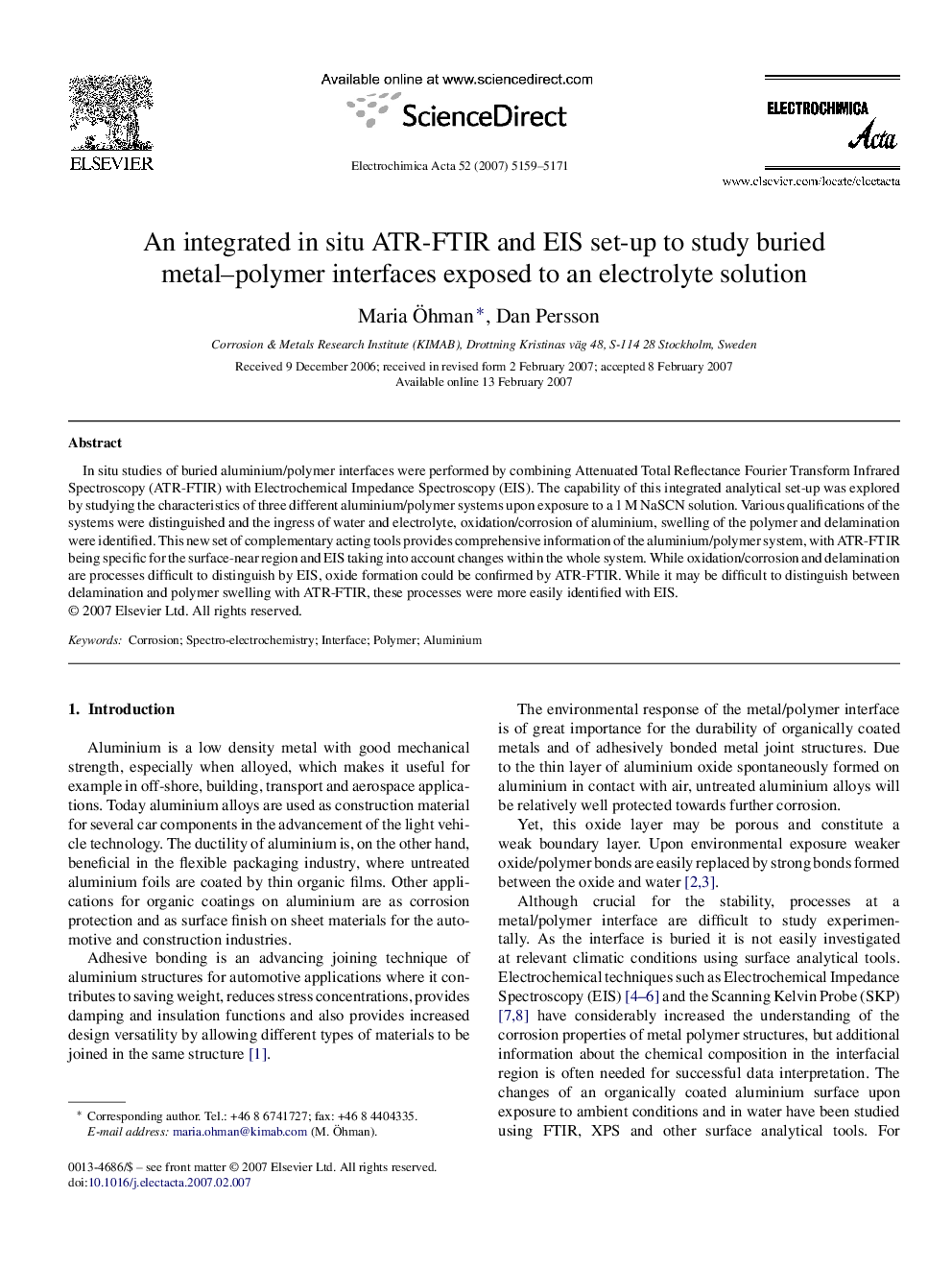| Article ID | Journal | Published Year | Pages | File Type |
|---|---|---|---|---|
| 194449 | Electrochimica Acta | 2007 | 13 Pages |
In situ studies of buried aluminium/polymer interfaces were performed by combining Attenuated Total Reflectance Fourier Transform Infrared Spectroscopy (ATR-FTIR) with Electrochemical Impedance Spectroscopy (EIS). The capability of this integrated analytical set-up was explored by studying the characteristics of three different aluminium/polymer systems upon exposure to a 1 M NaSCN solution. Various qualifications of the systems were distinguished and the ingress of water and electrolyte, oxidation/corrosion of aluminium, swelling of the polymer and delamination were identified. This new set of complementary acting tools provides comprehensive information of the aluminium/polymer system, with ATR-FTIR being specific for the surface-near region and EIS taking into account changes within the whole system. While oxidation/corrosion and delamination are processes difficult to distinguish by EIS, oxide formation could be confirmed by ATR-FTIR. While it may be difficult to distinguish between delamination and polymer swelling with ATR-FTIR, these processes were more easily identified with EIS.
